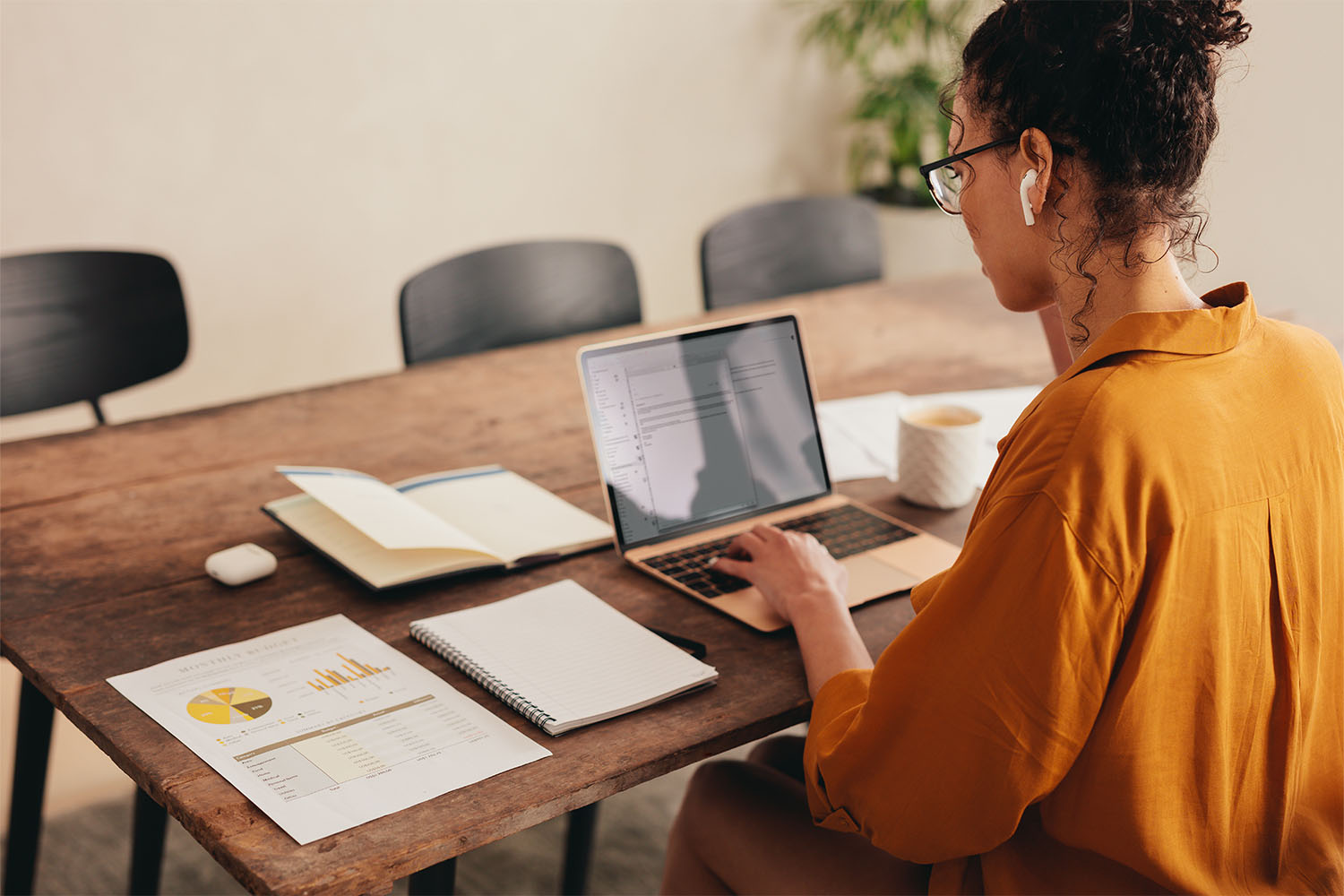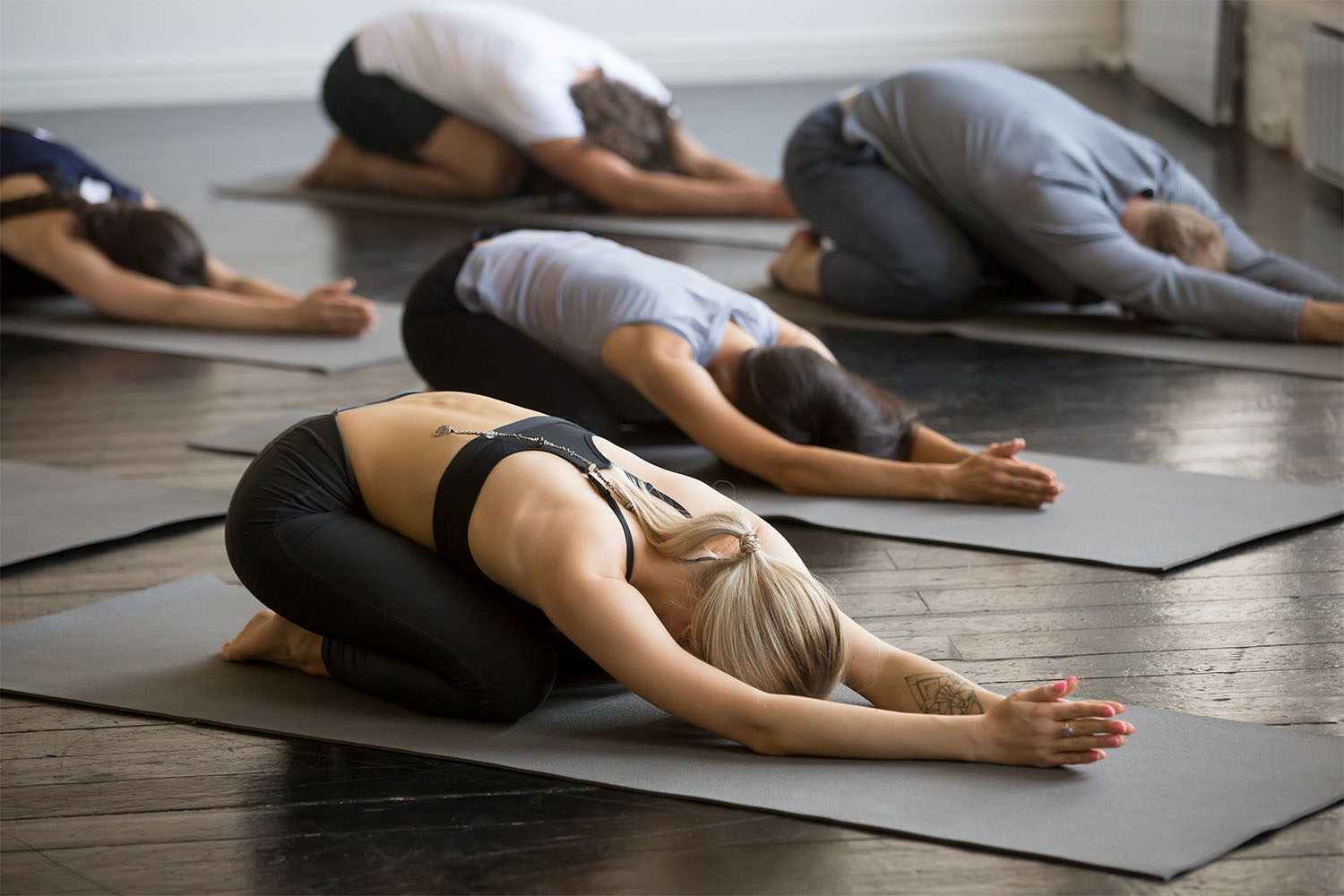Lower back pain is one of the most frustrating forms of discomfort and one of the most difficult to tackle. Unfortunately, trying to ignore it doesn’t help solve the problem either. On the bright side, lower back pain is usually the result of tight muscles in your lower back or the surrounding area, so knowing the right stretches to target these areas can have some surprising results.
Yoga is a powerful tool for relieving stiffness and tension while strengthening muscles to prevent pain-causing imbalance and misalignment. Using yoga poses for a full-body stretch can have a powerful impact on your lower back pain.
Yoga Poses To Relieve Lower Back Pain
Yoga practice can be an excellent addition to any recovery routine, as it helps to both strengthen and stretch your muscles in a full-body workout. Some physical therapists also applaud the link between yoga and recovery, thanks to its many benefits.
Even with frustrating pain in your lower back, knowing how to target stiff back muscles correctly can help provide some relief. The following poses are excellent for targeting pain and stiffness in your lower back, and they are great for beginners, so all you need is a yoga mat.
1. Downward-Facing Dog
Down-ward is one of the most fundamental yoga poses you learn no matter what your goals are, as it works your hamstrings, glutes, triceps, quads, deltoids, and core. This pose is also helpful for relieving sciatica.
It may take a little practice to keep yourself stable in downward-facing dog, but once you get it down, it is an excellent tool to have in your arsenal against lower back pain.
To do downward-facing dog:
- Plant your palms down at the top of the mat and place your feet at the bottom of the mat.
- Lower yourself to a plank pose with your arms straight and your wrists under your shoulders.
- Then, press into your hands and raise your glutes up toward the ceiling while looking down toward the mat. Keep your knees bent slightly and plant your feet.
- Your body should form a right angle at your hips, forming a straight line from your hips down to your hands and from your hamstrings down to your heels.
- Work up to holding this pose for a full minute.
2. Child’s Pose
Child’s pose is one of the best for stretching the muscles surrounding your lower back and spine, and it is not too difficult either. The pose provides a near full-body stretch, targeting your glutes, hamstrings, quadriceps, spinal extensors, and even rotator cuffs.
To do this pose:
- Sit on your hands and knees with your hands stretched out to the top of the mat.
- Keep your feet together and bring your hips back to sit on your heels.
- Keep your back straight and lower your forehead down to the mat.
- Stay in this pose for as long as five minutes as you let the tension release.
3. Bridge Pose
The bridge pose is excellent for strengthening and stretching your core, helping to target your abdominals, glutes, hip flexors, and erector spinae muscles. It is also one of the best poses for beginner yoga.
To do a bridge pose:
- Lie on your back and plant your feet on the ground, pulling your heels about a foot away from your glutes.
- Lie your arms flat next to your body.
- Press your feet and arms into the floor, raising your hips and tailbone up to the ceiling.
- While in the pose, you can leave your arms planted or use them to support your hips.
- You can hold this pose for up to a minute before slowly releasing it down to the floor.
4. Forward Bend
A forward bend is another stretch that you will find in most yoga routines, and it happens to be a great way to get a full stretch down your spine for relief in your lower back. It also stretches your hamstrings, upper back, and shoulders.
To do a forward backbend:
- Stand with your feet hip-width apart, keeping a slight bend in your knees.
- Do a forward fold, bringing your torso over your quadriceps and placing your hands on the floor.
- Make sure to keep your palms and your feet planted.
- Maintain this stretch for 30 seconds to a minute.
5. Sphinx Pose
The sphinx pose gives you an easy pose to target backaches by stretching out your spine and upper body, extending all the way down to your glutes. The pose helps target your chest and abdominal muscles while strengthening your spine.
To do this pose:
- Lie on your stomach and extend your legs straight out, keeping your feet together.
- Plant your hands on the mat at about shoulder level with your elbows pointing behind you.
- Begin lifting your head and shoulders off the mat and back toward your feet while engaging your abdominal muscles for support and keeping your shoulder blades together.
- Lift slowly and in a concentrated manner, curving your spine upward a little at a time, and keep your head and shoulders together while looking forward.
- You can hold this pose for up to five minutes or as long as is comfortable.
6. Cat-Cow Pose
The cat-cow pose is accessible for everyone and makes a great stretch to do in the mornings when you wake up or just before bed, helping to access your spine’s range of motion. The two-part pose helps also stretch your shoulders while working out the triceps and abdominal muscles that support you.
To try the cat-cow pose:
- Set yourself on your hands and knees with your back parallel to the floor.
- Plant your hands on the mat so that your wrists are aligned with your shoulders.
- Take a deep breath and bend your spine, dropping your stomach toward the mat and lifting your eyes toward the top of the room.
- Then, exhale and lift the center of your spine toward the ceiling while tucking your chin and looking down toward your knees.
- Slowly transition between the two positions repeatedly for a minute or longer, depending on your comfort.
7. Locust Pose
The locust pose allows you to get a comfortable stretch in your back, shoulders, and tight hips while helping to strengthen your lower back muscles.
To do a locust pose:
- Lie on your stomach with your arms straight down to your hips, your palms facing up, and your feet together.
- Slowly lift your head, arms, and the upper half of your body upward so that you look forward and there is a slight arch in your back.
- For a deeper stretch, you can lift your heels to the ceiling if it is comfortable.
- You can stay in this pose for up to a minute to deepen the stretch.
8. Spinal Twist
A spinal twist is one of the deepest stretches you can get for your lower back. The most important thing to remember for this stretch is to keep slow concentrated movements and not allow your knees to just drop to the floor.
For a spinal twist, you should:
- Lie straight on your back and with your knees lifted toward your chest. Your knees should form a right angle with your shins parallel to the floor.
- Then, rotate at your hips, slowly lowering your knees down to the side of your left leg.
- For an added stretch, you can use your left arm to push your knees down further.
- Hold this pose for about 30 seconds, and then repeat in the direction of your right leg.
Take Control of Your Pain
Yoga poses are an excellent way to bring your body back into alignment, stretch your muscles, and relieve low back pain. If you are having trouble, don’t be afraid to seek out a yoga teacher, yoga class, or more targeted physical therapy. However, you can add several other steps to your routine for lower back pain relief, like wearing a body sleeve that supports better circulation to your muscles to promote recovery.
At Incrediwear, we strive to help you handle all of your activities pain-free, whether you need to make it through the workday or your favorite exercise. Our collection of sleeves and braces uses semiconductor technology to stimulate improved blood flow and oxygen transfer to your muscles while remaining comfortable enough to wear during any activity.
Explore our complete collection of Incrediwear products for yourself and see how you can benefit.
Sources:
Benefits of Yoga | American Osteopathic Association
Exploring the Synergy Between Yoga and Physical Therapy | Samuel Merritt University
Read more

We are not always mindful of our posture, or at least not until it is too late. Poor posture can lead to discomfort and pain in the body, among many other negative effects on your health. On the ...

Exercise is a vital part of staying healthy for people of all ages. Keeping fit helps to keep your heart and lungs healthy, strengthen your bones and muscles, and fend off many illnesses and diseas...






Leave a comment
All comments are moderated before being published.
This site is protected by hCaptcha and the hCaptcha Privacy Policy and Terms of Service apply.